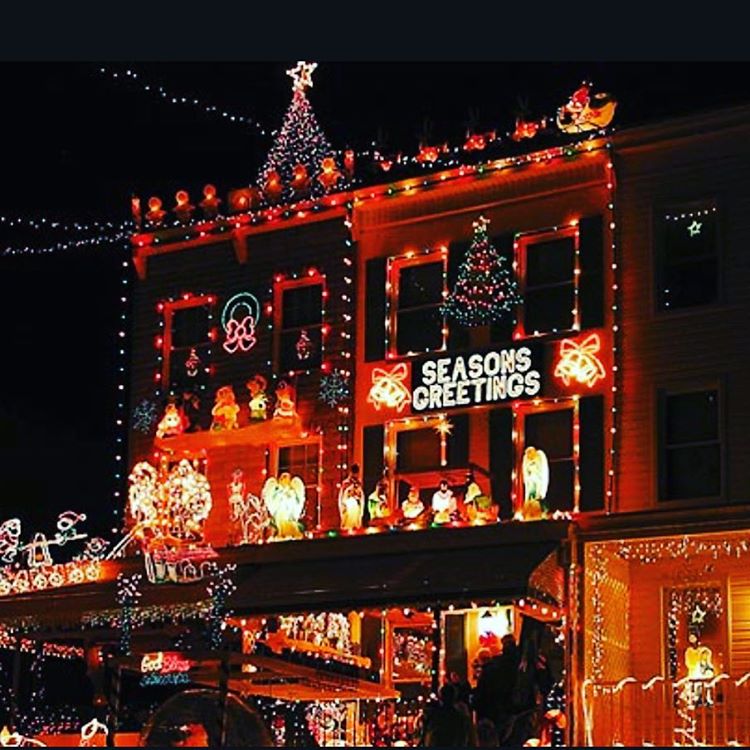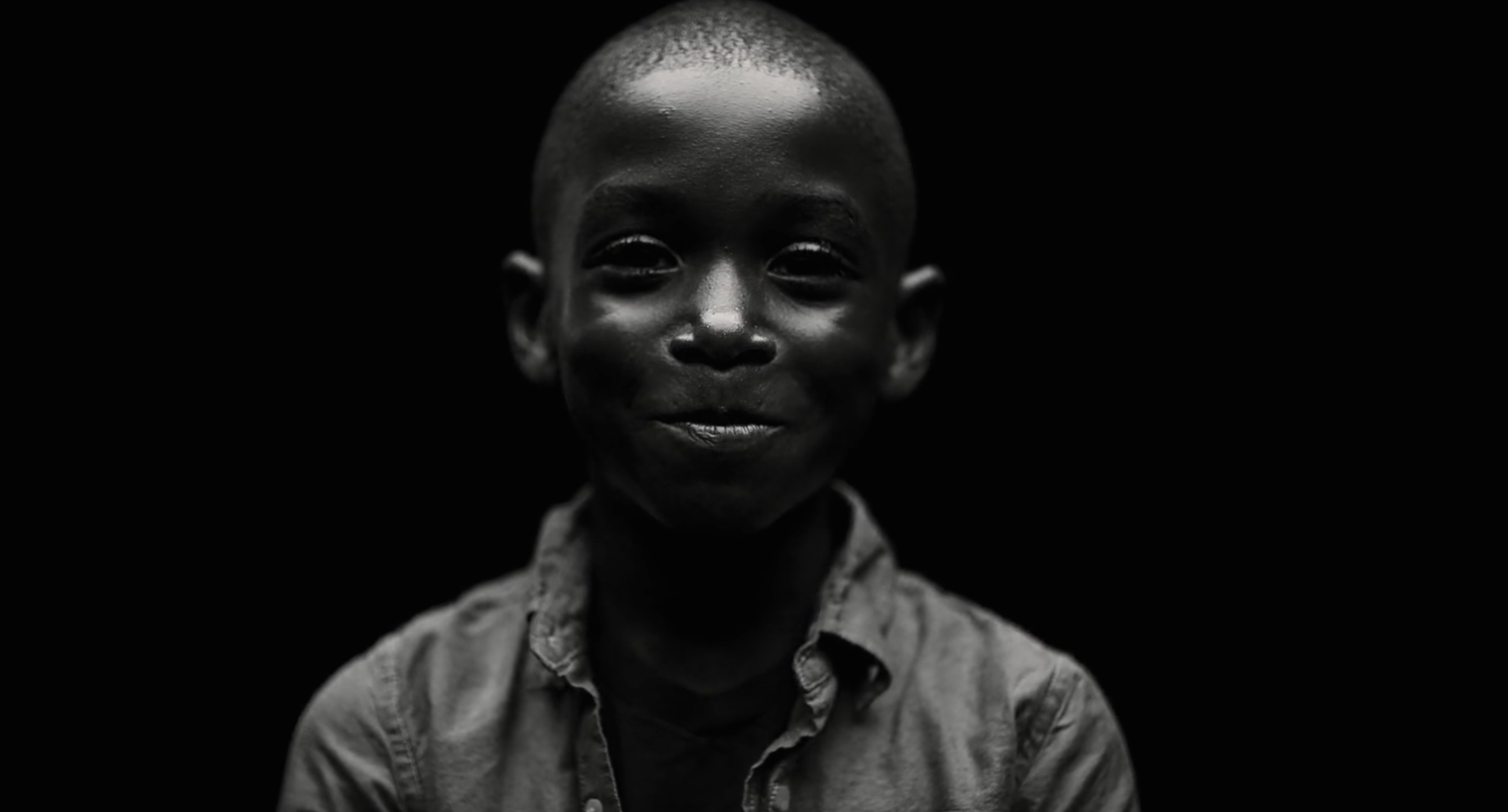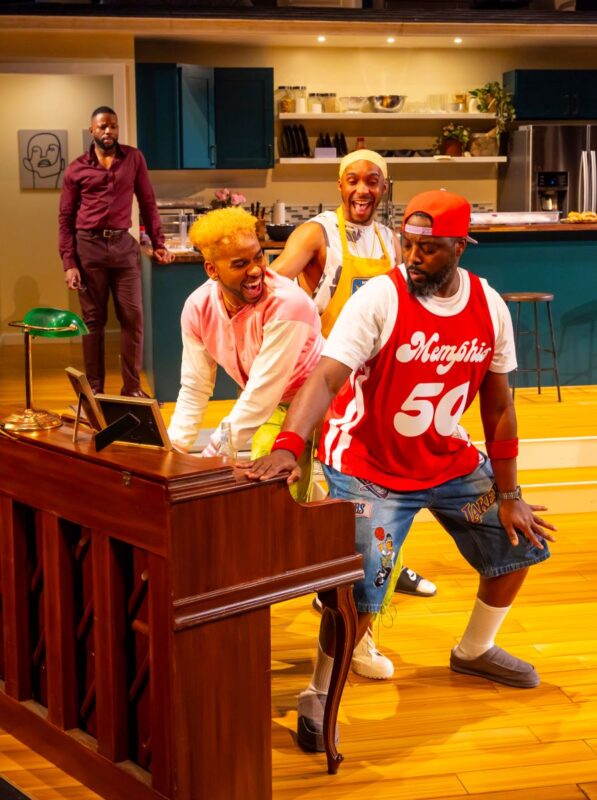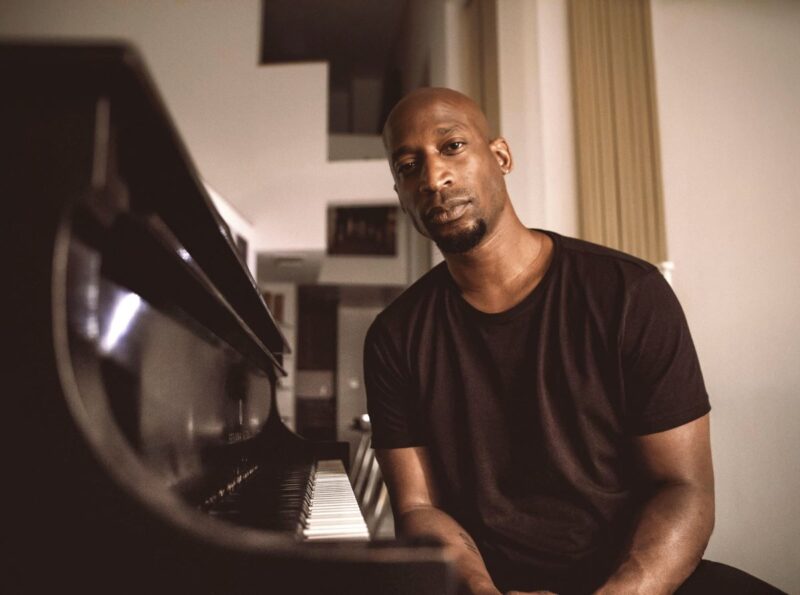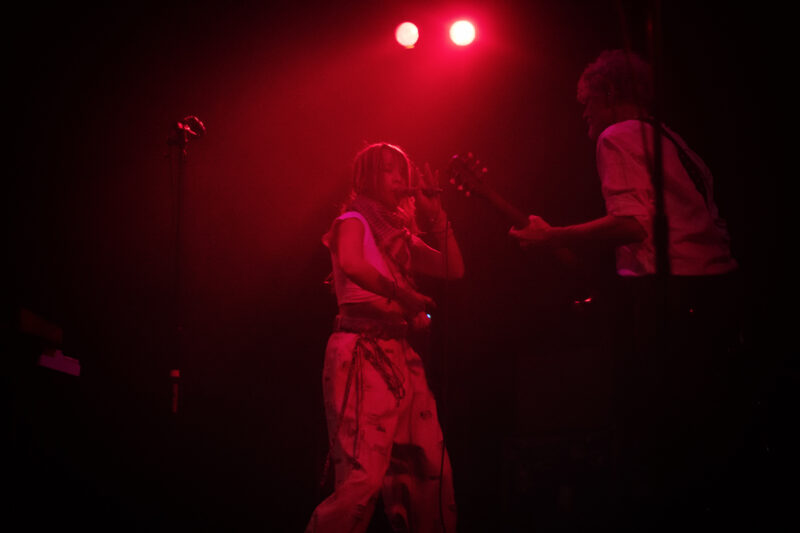Black America Again, A Cinematic Collaboration by Bradford Young and Common
The opening frame of a rap video: a caterpillar crawling on the stump of a tree, lights glaring in the distance. There is a sense of loud noise booming somewhere within this scene, but we are treated to ambient noise buffered by silence. Then a parade of black faces, illuminated in Roy DeCaravaesque black and white, are presented without artifice; no flash or jump cuts through the frame. The visual queues, the bombast and theater that we normally associate with Hip-Hop, are absent. The people are lovingly showcased as an assemblage of community before our eyes. Their energy is felt.
A rap video? There is more at work here. This is Baltimore, rendered Wire-less; the hood humanized by the intuitive eye of Bradford Young, award-winning cinematographer (Pariah, Mother of George, Selma, and Arrival) and Common, internationally acclaimed Hip-Hop legend and Hollywood star. Black America Again is a rap FILM, but it is also a watershed moment in Black Baltimore’s art scene and filmmaking community.
On Nov 15th Station North Arts District, along with, JHU-MICA’s film school, The Contemporary and Impact Hub hosted a screening of Black America Again at The Centre on North Avenue. The event culminated a three-month process in which Bradford Young and Common, in conjunction with Elissa Blount Moorhead (Station North Art & Entertainment District’s new Creative Director and partner in the LA/Baltimore-based TNEG film studio) mounted a community-based effort which produced the film and set in motion something bigger.
Ta-Nehesi Coates once stated, “…the entire aesthetic of hip-hop is sonic democracy. Basically any sound, any where, by any people, or any thing is fodder for hip-hop. Nothing is too low-culture (Get R Done.) And nothing is too high culture (Miles Davis).”
Young and his team of cinematographers including Shawn Peters, an award-winning filmmaker from Brooklyn, Jrr-Kwesi Fanti, a Baltimore-based filmmaker, and acclaimed cinematographer Maceo Bishop, operate the camera in the role traditionally assigned to the ‘sound’ of Hip-Hop, articulating aesthetic and assigning positive value to what they share with us. The particulars of recording images become the flow, cadence, and voice while the subjects, Black Baltimore in general, Sandtown in particular, and the black faces therein, arrive in a lyrical manner onscreen.
Two minutes into the video, the music begins, but it’s not the beat we expect to drop. A woman’s voice sings, “Lay down body… lay down a little while” and a tambourine rattles, and we see her, Rashida Bumbray, a noted performance artist, curator, and choreographer. She is dressed in the whites of a priestess or deacon-ess or usher, instrument in hand, standing with her back to us, hipshot in the middle of Gilmore Homes.
Our attention is drawn directly in front of her to a small graffiti memorial that marks the life of Freddie Gray. The camera, shooting in a somber desaturated palette, follows Miss Bumbray as she promenades through Gilmor Homes, singing this same refrain. She interacts with the people as she walks through, something that Young stated was deliberate, as most videos in Black communities treat the people that live in them as scenery and not actual subject.
Whereas traditionally this would be, in a sense, breaking the “fourth wall,” Young and his team essentially removed that wall on purpose. We have now exited film and entered ritual, as the song (and camera) work their way through the community. In the midst of the “ring shout,” we hear the sound of traffic, of children playing; we see the neat lawns in the midst of the “Projects.” Onscreen, a quiet dignity emerges in the district whose police station has more arrests than any other precinct in the entire nation and we are comforted (or for some, confronted) by the normality of it all.
This sound, a woman singing healing in the midst of the cacophony of the day, is something one would hear in Bahia, in Lagos, in Nairobi… this is the sound of life in the African Diaspora. Baltimore’s African essence is part of the draw that brought Common and Young here to film.
“On the surface, underneath and in the air, Baltimore feels like home literally and figuratively,” said Young, speaking from the South Pacific where he is the director of photography for the next Star Wars Han Solo film. “Black folks have always followed industry. That’s part of our migration… I think what we feel in Baltimore is the intensity of organized self-reliant black people. Not looking for a come-up, just real freedom and real community. Salt of the earth black folk who want to work, raise their children, play and express themselves. That is what is in the air in Baltimore.”
Color arrives in the frame with a brief shot of a “Chakaba” (stilt-walker) who is dancing. In West African societies and in other African/Caribbean societies, where they are known as the “Mocko Jumbi,” and they function as the spiritual police of the community. Young mentioned that in between takes, Baba Aziz, one the artists that performed as the Chakaba in the video, was walking up to young people in the street and blessing them. Again, the line between art and ritual, performer, and audience is removed in service of something greater.
The video then transports us to the edge a dark alley, where Common appears rapping deep in the alley with a young black man, Jabari Exum, playing a Djembe (West African hand drum). This is emceeing stripped down to its essence, just the bars and the beat, akin to the old-school lore of making beats on the lunchroom table at school, and as Common raps part of the first verse of Black America Again, and in the context of the visuals provided by Young, the depth and literary quality of the lyrics, their poignancy is set in relief:
“…Who stole the soul from black folk?
Same man that stole the lamb from cheap black smoke
And made the whip crackle on our back slow
And made us go through the back door
And rap for black bodies on the slave blocks
Now we slave to the blocks, on ’em we spray shots
Leaving our own to lay in a box
Black mother’s stomachs stay in a knot
We kill each other, it’s part of the plot
I wish the hating will stop (war)
And the battle with us
I know that black lives matter and they matter to us
These are the things we gotta discuss
The new plantation, mass incarceration”
The rhythm of the cuts now parallels the imagery in the lyrics: Young black men on the block, a mother holding her child, a mural of black historic figures set in a “Last Supper” scene on a wall. Common and Exum begin again and we hear the complete first verse of the song, with the first two couplets being of particular note:
“Here we go, here, here we go again
Trayvon’ll never get to be an older man
Black children, they childhood stole from them
Robbed of our names and our language, stole again”
Black America Again gives a nod towards Afrofuturism when a Bynum, a black monolithic object, appears on screen. Young previously created a video installation entitled “Bynum Cutler” that featured this object, and it finds its way into BAA as a metaphorical device.
“The Bynums are constantly evolving for me,” Young said. “They are part monument, part escape hatches. Objects to gather around. Objects to propel imagination. Portals. Black folk….. here and gone.” The footage of West Baltimore is not mere landscape; the faces of babies, families posted up on corner and children playing in a yard are juxtaposed against what Young has referred to as “Black Architectual Ruins” as a visual counterpoint. The erasure of Black people (think “Lion King,” an Africa with no Africans… or Woody Allen’s romantic interpretation of New York) creates a cultural environment that devalues black bodies because we are seen as optional. The honest eye of Bradford Young successfully refutes this with BAA.
The Black Futurist narrative of the project is also articulated through an intentional collaboration with local black filmmakers and crew; the creation of a new group of creative professionals in an industry where diversity studies often focus on the creative side of things constitutes the birth of a new black future.
Additionally, the same inequities detailed regarding who is acting, directing, and producing work is also an issue for the rest of the film crew: camera operators, lighting and sound techs, caterers, set designers, grips, and gaffers. Productions such as Black America Again give crew members vital experience, essential in getting access to union membership and networks that will facilitate career development.
Young explained, “Collaboration is why I’m doing this. It’s really a concentrated effort towards community building. Learning is paramount. Being affected and affected by artists and filmmakers who inhabit space and atmosphere.”

In a stunning sequence, Rashida Bumbray stages a “ring shout” in the middle of a street in West Baltimore. This is no simple hand clapping and singing routine. Two women carefully draw a bisected circular symbol on the ground reminiscent of a Kongo derived cosmogram. There is a piano set up on the sidewalk that is quietly being played – some of the riffs from the pianist sound like a background fodder for a Baptist church service, and some of the riffs sounds straight out of a Beale Street Blues club.
Then a group of people led by Bumbray, all dressed in white, surround the women and sing a ring shout version of Parliament’s “Swing Down Sweet Chariot” as they dance around the circle. Imagine church folks singing Biblically inspired funk in broad daylight in West Baltimore with no “fourth wall.” It’s no wonder you can see bystanders surround the circle, clearly as captivated by the spectacle of the ring shout itself as they are of the Common making a video on their block. This is Black America… healing itself with a melange of cultural technology: funk, latter-day hieroglyphics and community.
In the context of Baltimore, where the city is grappling with the equally difficult task of managing growth while simultaneously undoing centuries of systemic inquity, art is yet another area of change and opportunity. We traditionally cite the work of John Waters (rightfully so) as critical to the foundation of this filmmaking community; in this moment, context is established by examining this work on both sides of the camera and beyond to how it shapes the culture of the environment from which it has sprung.
For Elissa Blount Moorhead, this project represents a statement of intent. After building a formidable artistic caché that now takes her regularly back to her native New York and out to Los Angeles, the challenge of creating and propagating world-class Black art within Baltimore is a welcome task.
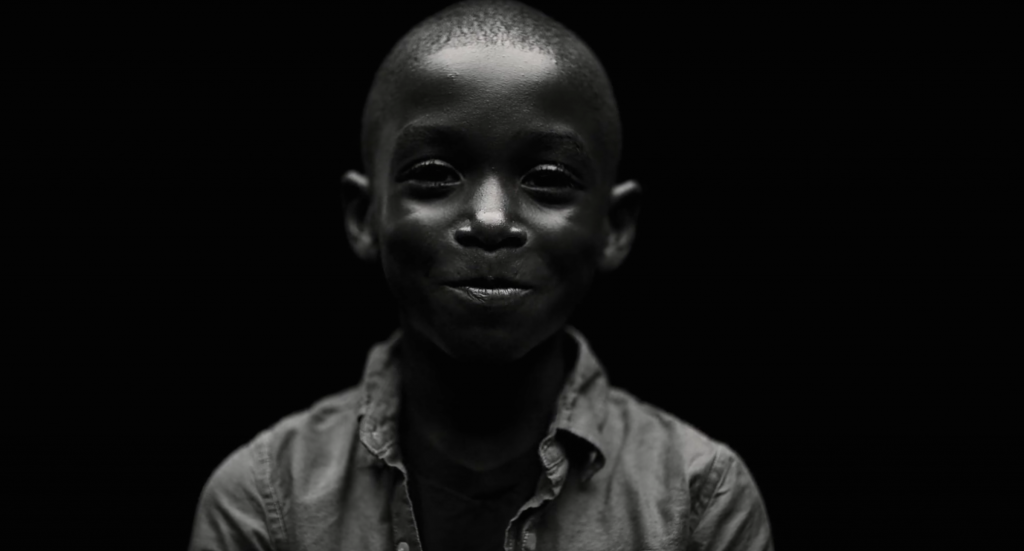
“Baltimore is brimming with incredible talent at all levels,” says Moorhead. “I am constantly in awe of it. I am also torn between the desire to showcase it globally and just focusing on creating an ecology where we can stay creative in our own realm absent a wider gaze. Baltimore seems to be a place where established artists can work well in proximity to major market cities like NYC and LA, but I am concerned about how we create and support existing critical mass here. How do I look a young artist in the eye and say, ‘You don’t have to leave you have everything you need here!’ I want that to be true.”
Black filmmaking in Baltimore has gone through different eras. In the ’80s, hometown hero Howard Rollins was climbing towards success through his role in the television series In The Heat of the Night. Later on, local black film impresario Charles Johnson took what used to be legendary nightclub O’Dell’s on North Avenue, and transformed it into a center for Black Film that served as a cultural influence for young black cineastes. Another hometown hero, Charles S. Dutton, leveraged his success on Broadway to build a successful career in Hollywood, which includes his hit television series Roc, which brought attention and work to Baltimore.
Of course, Baltimore’s golden age of serialized police dramas happened, with The Wire, The Shield, and The Corner providing opportunities for local creative talent to make their mark. In regards to Black Baltimore, the reliable narratives of urban decay through drug culture and poverty have become mainstays for subsequent Hollywood productions, with exceptions such as Robert Townsend’s Meteor Man (which was filmed in Reservoir Hill in 1992) and despite the oft negative portrayal of the city, the efficacy of the productions filmed here have often been hinged on the powerful work of local artists.
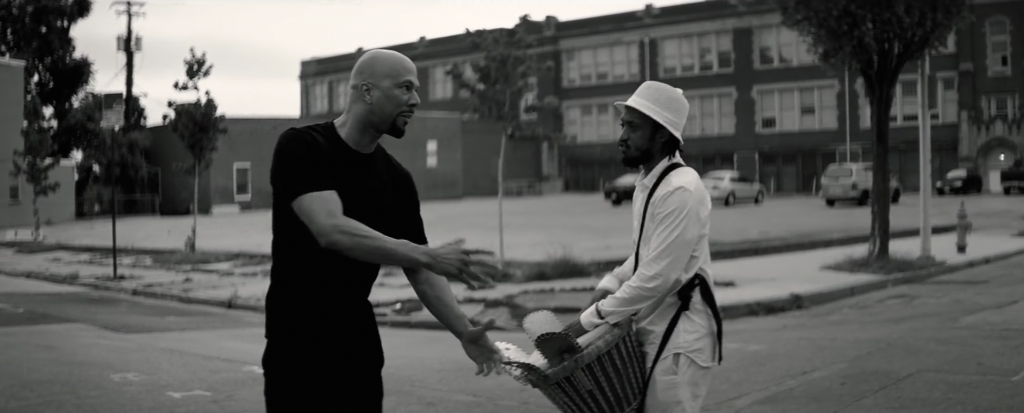
One of the most experienced black filmmakers in Baltimore, Embu Seitu, has been a set designer, lighting and sound technician for the past 30 years, working for Black Entertainment Television, WHAR-TV, The Wire, and innumerable productions in Baltimore and Washington, D.C. He is a long time member of the I.A.T.S.E. Local 13 (the Baltimore branch of the International Association of Theatrical Stage Employees) mentoring scores of young black filmmakers and crew members over the years, and he still sees the fundamental issue with creating equity in filmmaking as training.
“Where is the intern program?” Seitu asks. “The IA charges about a thousand dollars to join, but doesn’t provide training. It works with a local college in the county, but Morgan State has an entire film department and doesn’t get the same attention.”
The importance of Black America Again will hopefully manifest in the years to come behind the camera, as it was an opportunity for emerging local filmmakers such Shannon Lo Wallace and Kirby Griffin to work alongside Young and build relationships with the other professionals on set. Seitu himself served as the 3rd unit camera operator for this shoot, saying, “Working with Brad, Shawn and Kwesi, we did these scenes that were slick, just grabbing what’s there, and it doesn’t have to be perfect. If I can film something without messing with it, that’s what I like. We all were on the same page about what we wanted.”
Blount Moorhead is effusive about the Baltimore artists and filmmakers to whom she has been exposed. “I am in love with many local artistic voices like Six Point Pictures, Film Fatales, Get Your Life, and so many more,” she says. “I am learning about creative communities and makers here every day. My current goal is to work to support what is already happening and bolster technical support and build capacity where I can.”
Stevie Wonder’s voice sings the chorus of the song over a beat that casually slides in with a scratch stuttering, “He-Here we go again.” Lest we forget that this IS a rap video, the godfather of it all, James Brown, begins speaking to us about self -worth:
“You know, one way of solving a lot of problems that we got
is lettin’ a person feel that they’re important
And a man can’t get himself together until
He knows who he is and be proud of what and who he is
And where he come from, and where he come from…”
The elder ancestor having spoken, the Black Futurist narrative of the video continues as the video closes out with another seemingly endless stream of black beauty of all ages, tones, and variation of features; a family tree unbroken by the ruin visited upon us and renewed. It is clear that this is resonating with viewers of the video, which has amassed over 300,000 views on Youtube since its release, a large number for a long format video.
Blount Moorhead (and Young) are clear on inequity detailed by Seitu, because it is the same inequity they have faced down in Los Angeles, New York, and elsewhere. Black America Again is an effort to enable the vanguard of an exciting new film movement. It is the answer to Moorhead’s question, “How can we make space for the 15-year-old Common’s and Bradford’s to find each other, their guides, their resources, and themselves?”
As they take notes and assist an emerging master in a new telling of the most poignant story this soil has produced, these young filmmakers and creative talent of Black America Again announce themselves as Baltimore’s tomorrow, and we should count ourselves lucky that we have tickets to the big show.
***********
Baltimore based writer/futurist Jason Harris, a 2015 Kimbilio Fiction fellow, is the editor of the speculative fiction anthology REDLINES: Baltimore 2028, as well as the author of the soon-to-be-released novel Fly Girl. You can find his work online at www.newfuturism.com.
